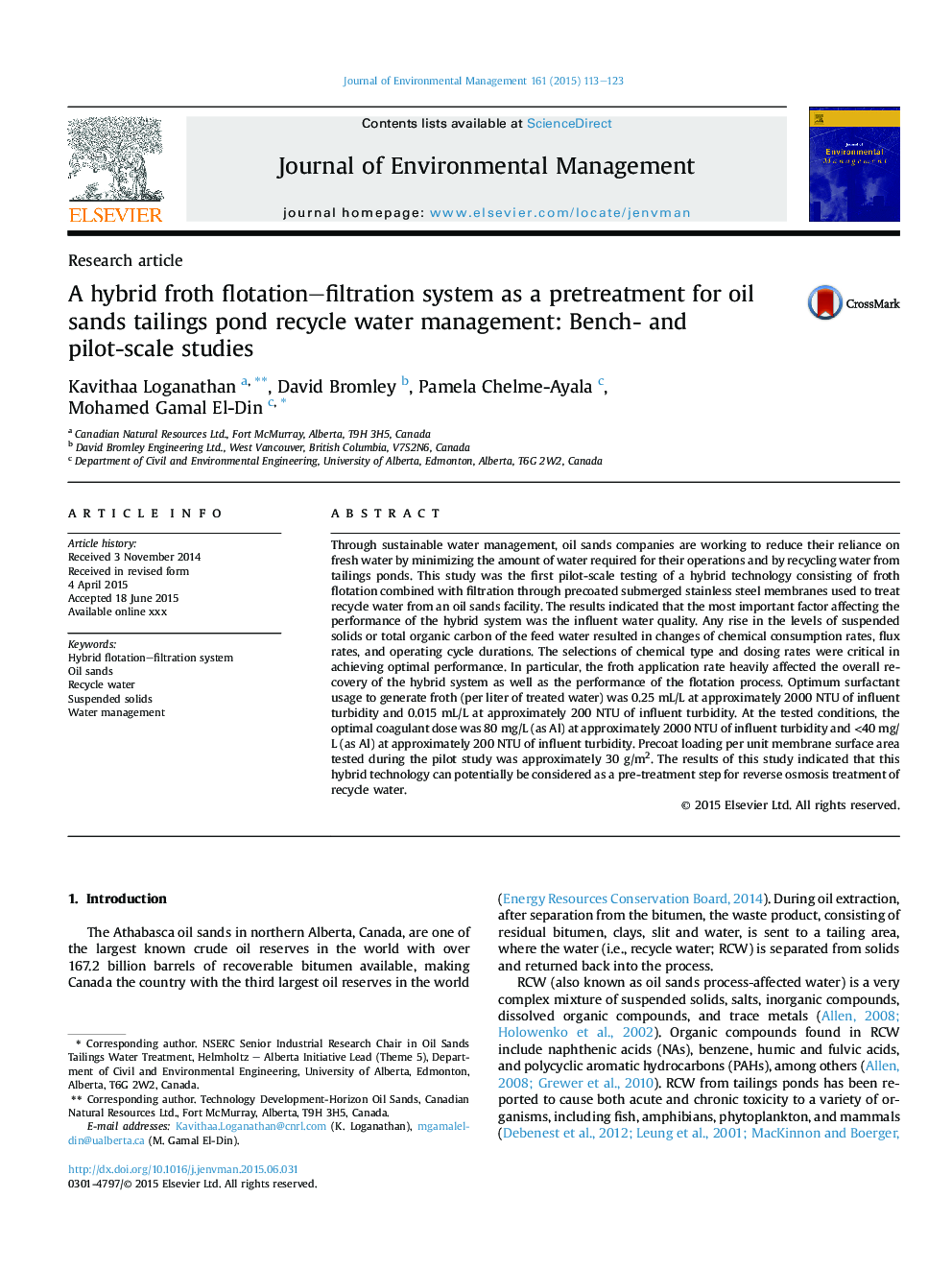| Article ID | Journal | Published Year | Pages | File Type |
|---|---|---|---|---|
| 7481602 | Journal of Environmental Management | 2015 | 11 Pages |
Abstract
Through sustainable water management, oil sands companies are working to reduce their reliance on fresh water by minimizing the amount of water required for their operations and by recycling water from tailings ponds. This study was the first pilot-scale testing of a hybrid technology consisting of froth flotation combined with filtration through precoated submerged stainless steel membranes used to treat recycle water from an oil sands facility. The results indicated that the most important factor affecting the performance of the hybrid system was the influent water quality. Any rise in the levels of suspended solids or total organic carbon of the feed water resulted in changes of chemical consumption rates, flux rates, and operating cycle durations. The selections of chemical type and dosing rates were critical in achieving optimal performance. In particular, the froth application rate heavily affected the overall recovery of the hybrid system as well as the performance of the flotation process. Optimum surfactant usage to generate froth (per liter of treated water) was 0.25Â mL/L at approximately 2000Â NTU of influent turbidity and 0.015Â mL/L at approximately 200Â NTU of influent turbidity. At the tested conditions, the optimal coagulant dose was 80Â mg/L (as Al) at approximately 2000Â NTU of influent turbidity and <40Â mg/L (as Al) at approximately 200Â NTU of influent turbidity. Precoat loading per unit membrane surface area tested during the pilot study was approximately 30Â g/m2. The results of this study indicated that this hybrid technology can potentially be considered as a pre-treatment step for reverse osmosis treatment of recycle water.
Related Topics
Physical Sciences and Engineering
Energy
Renewable Energy, Sustainability and the Environment
Authors
Kavithaa Loganathan, David Bromley, Pamela Chelme-Ayala, Mohamed Gamal El-Din,
